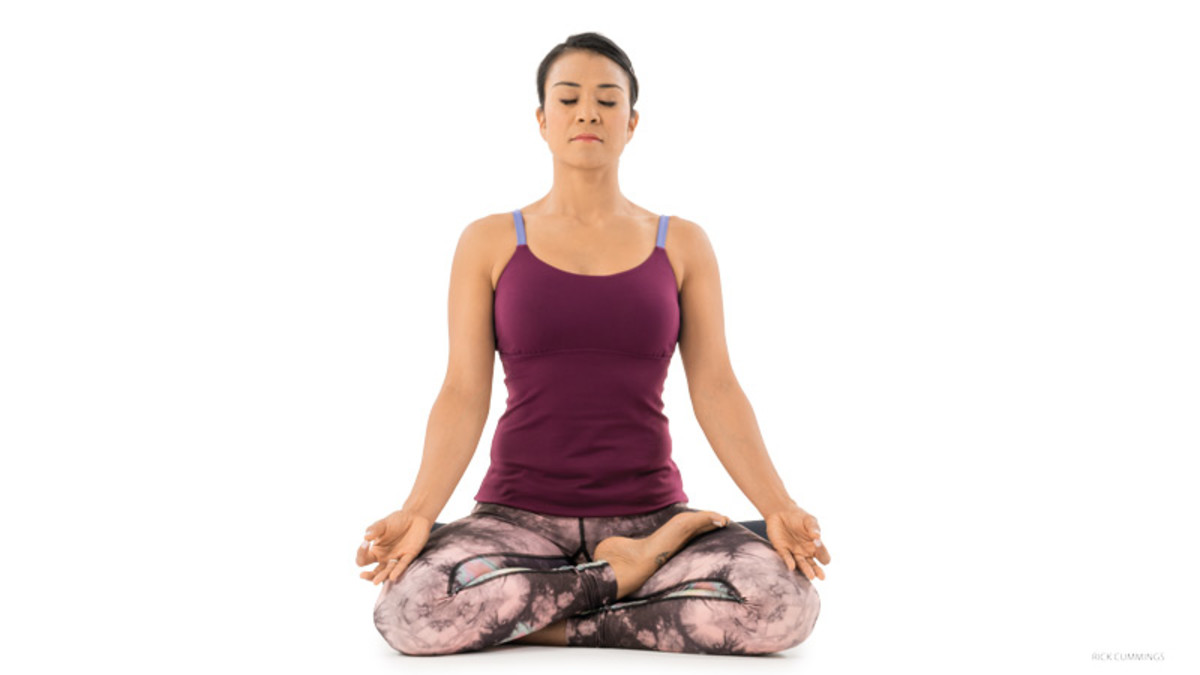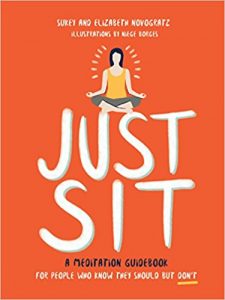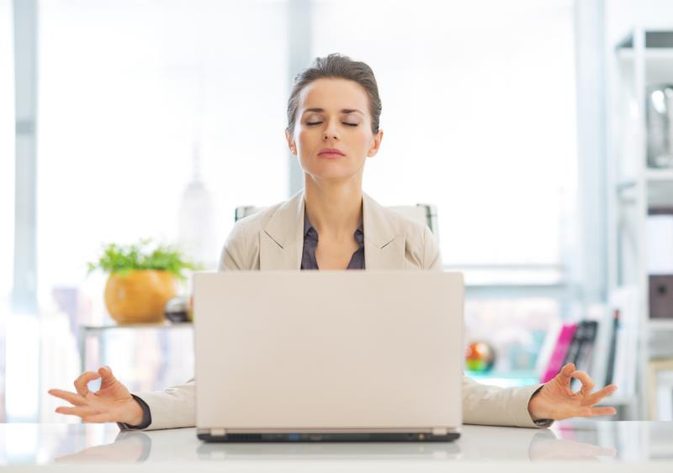Meditation may help you cultivate qualities that are hard to hold onto these days: focus, patience, calm, clarity, insight and perspective.
These are all qualities that are vital for creativity, according to poet and coach Mark McGuinness in this piece on 99U.
But for many of us meditation feels difficult and awkward and uncomfortable and not-at-all feasible. In the 2017 book Just Sit Sukey and Elizabeth Novogratz bust many myths about meditation and share an assortment of simple tips for practising. Below are some helpful tips from their book to get you started.
- Add music or a guided meditation. This is great when you’re not sure how to start. You might put on classical or ambient music. You might listen to a self-compassionate guided meditation.
- Meditate before or after something you already do. For instance, meditate after brushing your teeth, after taking a shower, after drinking coffee, or in your driveway after getting home from work. Meditate before making dinner, before driving to work, before reading or before falling asleep.
- Meditate anywhere. Meditate while feeding your baby, or with your cat on your lap. Meditate at an art museum or at the library. Meditate under a tree or in a garden. Meditate on a balcony, on the beach, or on an airplane.
- Meditate at work. If you work in an office, you might meditate in an empty conference room or in front of your computer with headphones on. You might even meditate inside a stairwell. Or leave work during lunch, and meditate on a park bench or practice a walking meditation.
- If you’re having a tough time sitting still, use a heating pad or electric blanket for comfort; sit with a loved one; meditate in the tub or sauna; or put a face scrub or mask on and sit for 15 minutes. Another option is to shake out the restlessness: Exercise, dance, try tai chi. Then return to your meditation.
- Your mind will likely start to race with all sorts of thoughts. What am I making for dinner? What do I need to do today? I think ______ is mad at me. Again. I can’t believe I did that. Wow. I have soooo much to do. I’m soooo behind. This is totally normal. The aim of meditation is not to stop thinking or to have an empty mind. When thoughts arise during meditation, you can watch them float away on a “thought river;” tell them “thank you for showing up today but I’m not interested;” or imagine that each thought is inside a bubble, and pop the bubbles as they appear.
After meditating, consider journaling about how you feel or what thoughts arose during your meditation. Or sketch the images that came to mind.
In the same piece on 99U, McGuinness notes that he practices a mix of concentration (Samatha) and insight (Vipassana) meditation. He writes: “Samatha practice is simply about focusing on your breathing, in order to develop concentration and calmness. It’s the best place to start, given how busy and unfocused our minds typically are. Vipassana is so simple it almost sounds like doing nothing at all – it’s about being very aware and present to your immediate experience, noticing your thoughts, feelings, bodily sensations, and the sounds and sights around you.”
Ultimately, meditate on your own terms. Do what works best for you. Meditate in a way that is nourishing, soothing, refreshing, and inspiring. Different techniques will resonate with different people. Explore, experiment and stick with what you need.
From: PsychCentral




